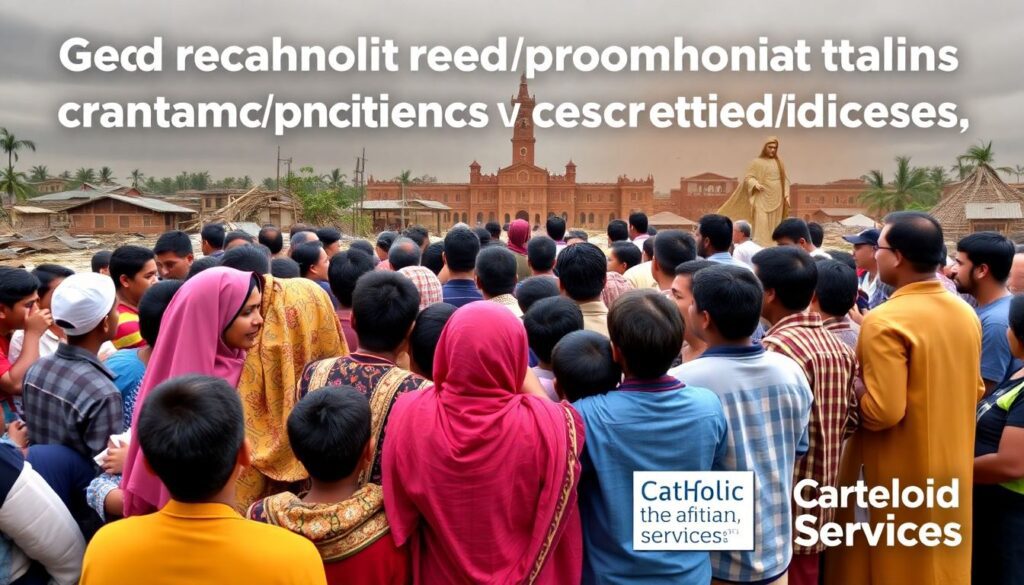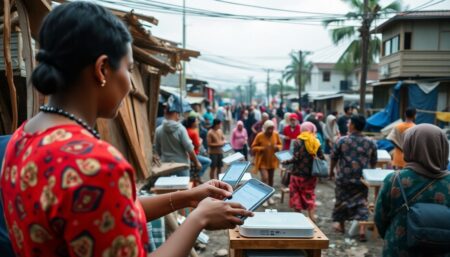Welcome to this detailed and engaging exploration of how Catholics have shown remarkable solidarity and support during the natural disasters of 2024. This article will delve into the various ways the Catholic community has responded with compassion, generosity, and faith in action. Let’s embark on this journey of hope and resilience.
A Story of Faith, Resilience, and Community Support
Imagine the powerful sight of a Catholic community joining hands, united in a common mission to support victims of natural disasters. Picture the bustling epicenter of relief efforts, where parishioners, priests, and nuns alike roll up their sleeves, ready to serve those in need. The backdrop is a mix of stark reminders of nature’s wrath: a landscape of homes reduced to rubble by earthquakes, streets turned into rivers by relentless floods, and hillsides scorched by wildfires. Yet, amidst this chaos, there’s an unmistakable beacon of hope: the vibrant logo of Catholic Relief Services, emblazoned on trucks, tents, and volunteers’ vests, signaling that help has arrived.
See the swift transformation of places of worship into sanctuaries of aid. Church halls become makeshift shelters, filled with cots and blankets, providing a safe haven for those who have lost their homes. Parish kitchens turn into 24-hour meal preparation stations, as volunteers cook hot food to nourish both body and soul. Meanwhile, collection plates overflow not with coins, but with notes of support and promises of prayer, reflecting the generosity of the community.
Witness the power of faith in action as Catholic Relief Services coordinates the distribution of essential supplies. Volunteers, driven by their belief in the dignity of every human life, deliver food, water, and medical aid to those in desperate need. Amidst the whir of helicopters dropping off supplies and the hum of trucks carrying away debris, there’s a palpable sense of hope and resilience. This is not just a community coming together; it’s a testament to the unstoppable force of love and compassion in the face of adversity.
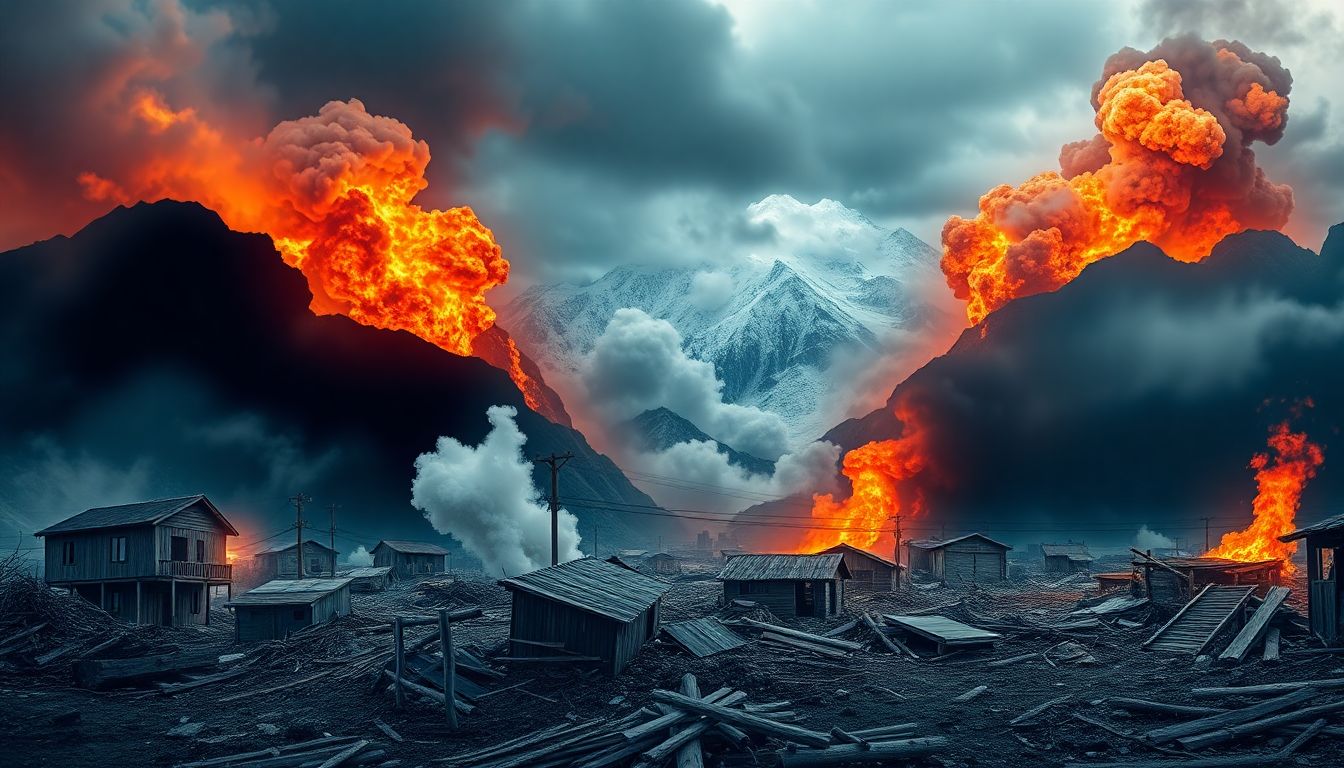
A Year of Devastating Natural Disasters
The year 2024 was marked by a series of devastating natural disasters that left communities around the world reeling. From flooding and landslides to hurricanes and typhoons, these events highlighted the fragility of our ecosystem and the urgent need for preparedness and climate action.
In Eastern Africa, Ethiopia was hit by catastrophic landslides following prolonged heavy rainfall. These landslides devastated rural communities, destroying homes, crops, and critical infrastructure. The most affected areas included the highland regions, where steep slopes and deforestation exacerbated the impact. Communities were left to grapple with the loss of lives, displacement, and food insecurity, with relief efforts complicated by difficult terrain and damaged roads.
Meanwhile, the Caribbean braced for one of its most destructive hurricane seasons in recent memory. Hurricane Beryl, a Category 5 storm, tore through the region, bringing with it torrential rainfall, storm surges, and winds exceeding 150 mph. Islands such as Barbuda, Puerto Rico, and the Dominican Republic were particularly hard hit, with widespread power outages, flooding, and damage to essential infrastructure. The storm left communities in disarray, with thousands displaced and a monumental recovery effort required to rebuild homes, schools, and healthcare facilities.
Across the Pacific, Southeast Asia was battered by a series of powerful typhoons, each bringing heavy rainfall, flooding, and destructive winds. The most notable were Typhoon Mangkhut and Typhoon Yutu, which caused extensive damage in the Philippines, Vietnam, and Indonesia. These storms resulted in:
- Widespread power outages and disruption of communication networks.
- Flooding that inundated agricultural lands and urban areas alike.
- Landslides that buried homes and blocked roads, complicating rescue efforts.
The typhoons highlighted the vulnerability of coastal communities and the urgent need for robust early warning systems and resilient infrastructure.
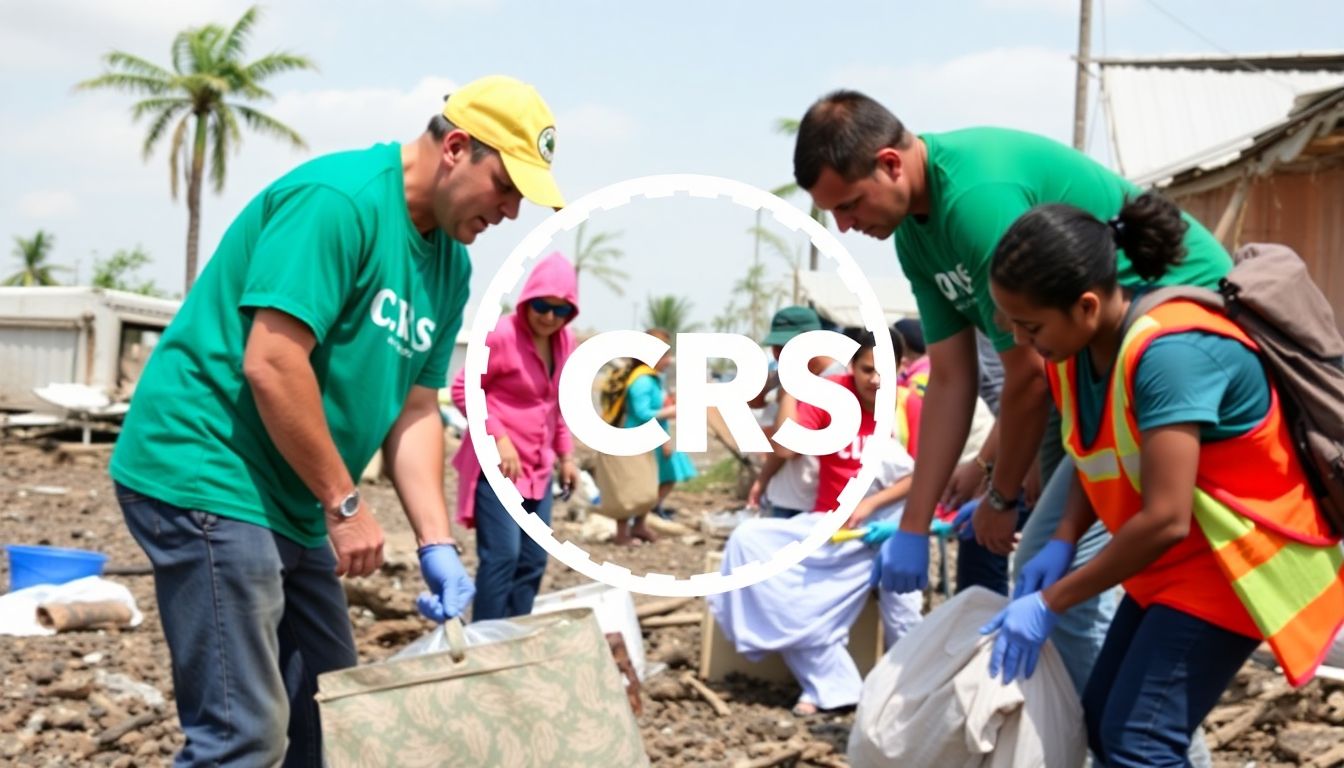
Catholic Relief Services: A Beacon of Hope
Catholic Relief Services (CRS), founded in 1943, has been a beacon of hope and support for communities affected by poverty, disasters, and conflicts worldwide. As the official international humanitarian agency of the Catholic community in the United States, CRS operates on the principle of assisting those in need regardless of race, religion, or nationality. Their global reach is astonishing, with programs implemented in over 110 countries, providing life-saving assistance and fostering long-term development.
CRS’s impact is amplified through its membership in Caritas Internationalis, a global confederation of 165 Catholic relief, development, and social service organizations operating in over 200 countries and territories. This network enables CRS to respond rapidly and effectively to emergencies, leveraging local knowledge and resources. Through this collaborative effort, CRS and Caritas Internationalis can truly embody the Catholic social teaching of global solidarity and the preferential option for the poor.
The work of CRS is not just about distributing aid but also about empowering communities and fostering self-reliance. As Archbishop Nelson J. Pérez puts it, ‘CRS’ work is a testament to the power of faith and compassion in action. When Catholics come together to serve the least among us, we create a ripple effect that can transform the world.‘ This ethos is evident in CRS’s approach, which includes:
- Emergency response and recovery
- Agriculture and livelihoods support
- Health and nutrition services
- Peacebuilding and justice initiatives
Through these efforts, CRS not only addresses immediate needs but also tackles the root causes of poverty and inequality, making a sustainable impact on the communities they serve.
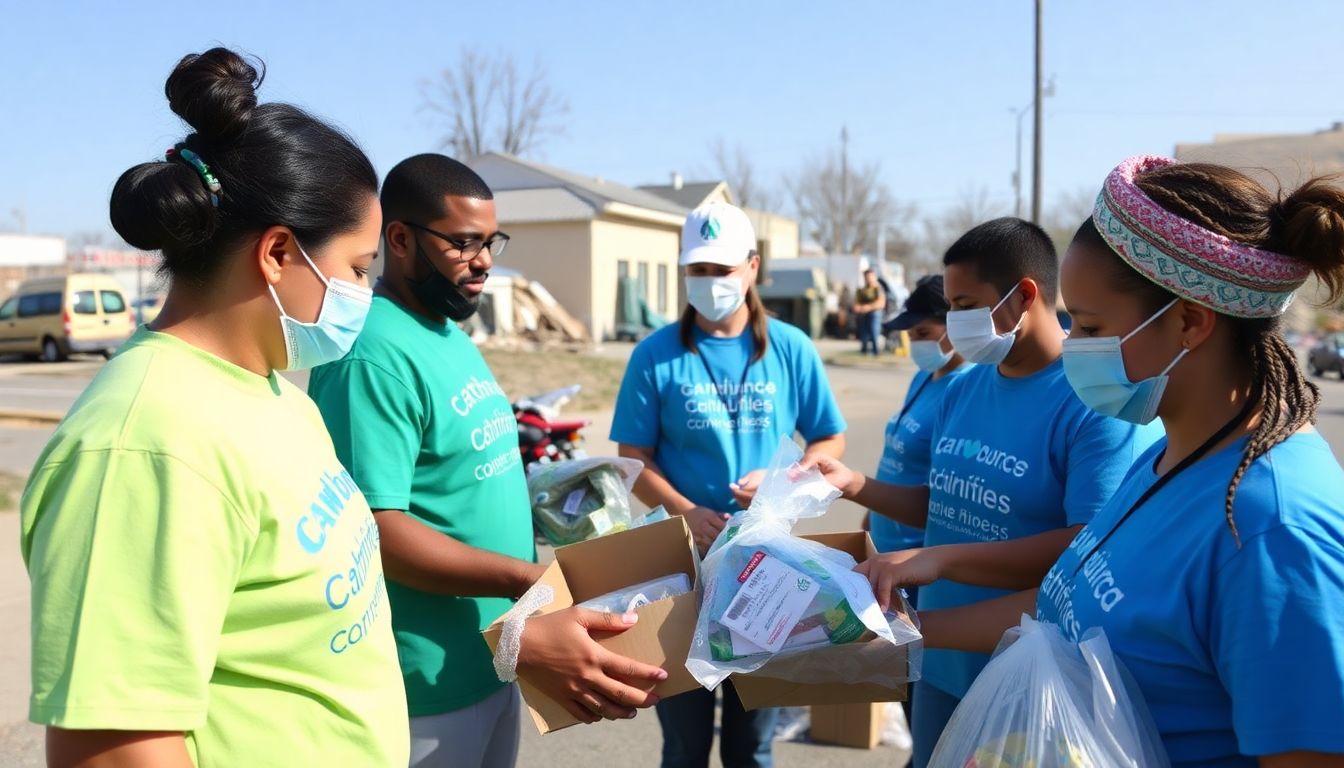
Domestic Efforts: Catholic Charities USA in Action
Catholic Charities USA, a nationwide network of agencies, has been at the forefront of responding to natural disasters, providing critical support and relief to communities across the United States. Their disaster response efforts are guided by the principle of ‘love thy neighbor’, ensuring that help reaches those most in need, regardless of their background or beliefs.
One notable example is their response to Hurricane Katrina in 2005. Catholic Charities USA mobilized immediately, providing emergency food, water, and shelter to thousands of displaced individuals. They established temporary housing, offered counseling services, and even provided financial assistance to help families rebuild their homes and lives. The agency set up disaster relief centers that served as hubs for distributing essential supplies and coordinating volunteer efforts.
In 2017, when Hurricane Harvey devastated Texas, Catholic Charities USA once again sprang into action. They provided:
- Emergency shelter and hot meals to evacuees;
- Case management services to help families navigate the complex recovery process;
- Direct financial assistance for immediate needs;
- Spiritual support through pastoral care and counseling.
Local Catholic churches also played a crucial role, offering their facilities as shelters and organizing prayer vigils to provide spiritual comfort.
Beyond material assistance, Catholic Charities USA offers spiritual support that is often a beacon of hope in trying times. After the California wildfires in 2018, they not only provided emergency supplies but also organized support groups and spiritual counseling sessions. Priests and volunteers visited affected communities, offering prayers, comfort, and a listening ear. This holistic approach to disaster relief ensures that both the physical and spiritual needs of survivors are met, embodying the true spirit of Catholic charity.
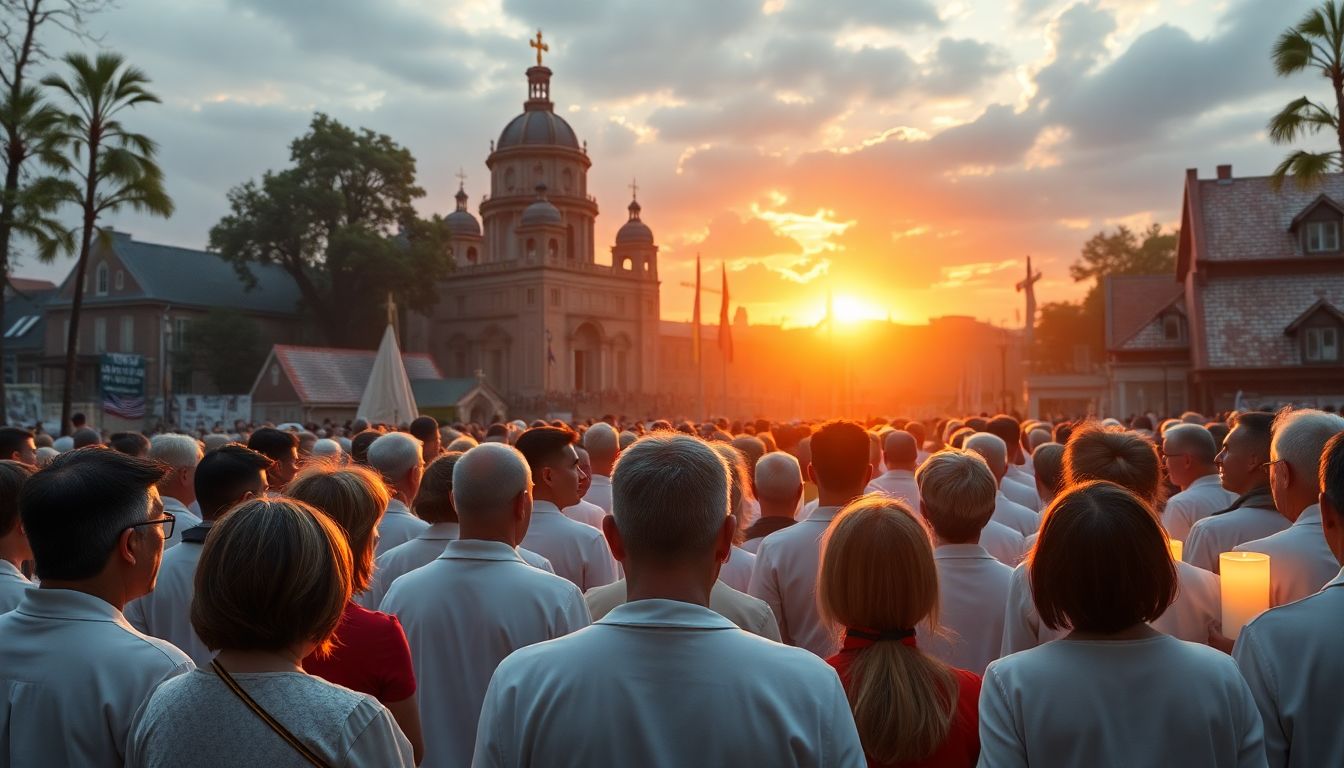
Faith in Action: Prayer and Community Support
In times of natural disasters, Catholics around the world have found solace and strength in the powers of prayer and community support. These trying moments have witnessed the Catholic community coming together to provide spiritual, emotional, and often, tangible support to those afflicted. Through collective prayers, they petition for divine intervention, comfort, and resilience.
One poignant example is the Diocese of St. Thomas in the U.S. Virgin Islands, which has faced the brunt of several hurricanes in recent years. In response, the diocese composed a heartfelt ‘Prayer During Hurricanes’, which begins with: ‘Lord Jesus, Master of the elements, you calmed the stormy seas and brought your disciples to safety.‘ This prayer, recited together, serves as a beacon of hope and unity, reminding the community of God’s presence amidst the storm’s devastation.
Meanwhile, in the frigid, isolated regions of Ketchikan, Alaska, the Holy Name Parish has shown what community support truly means. When natural disasters such as landslides and floods have struck, the parish has swiftly organized efforts to provide:
- Hot meals and temporary shelter in the parish hall
- Distribution of emergency supplies like blankets, food, and clean water
- Emotional support and counseling services
- Coordination of volunteer efforts for cleanup and rebuilding
Their actions embody the Catholic social teaching of ‘love thy neighbor’ and illustrate the Church’s role in fostering community resilience.
Moreover, these community efforts are not just acts of charity, but also of empowerment. They enable victims to regain a sense of normalcy and dignity, and help them take the first steps towards rebuilding their lives. Through prayer and community support, Catholics demonstrate that even in the face of nature’s wrath, faith, hope, and love can prevail and light the way forward.
FAQ
What is Catholic Relief Services (CRS) and what role does it play in disaster relief?
How have Catholics in the U.S. responded to natural disasters in 2024?
What are some examples of natural disasters that occurred in 2024?
- Landslides in Ethiopia
- Hurricane Beryl in the Caribbean
- Six successive typhoons in Southeast Asia
- Hurricanes Helene and Milton in the U.S.
- Wildfires in New Mexico and Bolivia
How have Catholic communities provided support to victims of natural disasters?
- Launching disaster relief donation campaigns
- Offering temporary accommodations and basic necessities
- Providing spiritual support through prayer and community gatherings
- Organizing aid collection and distribution



